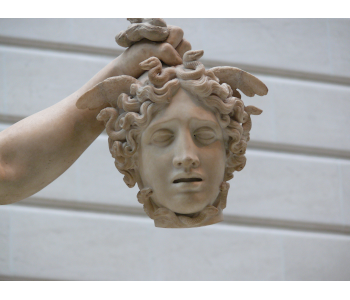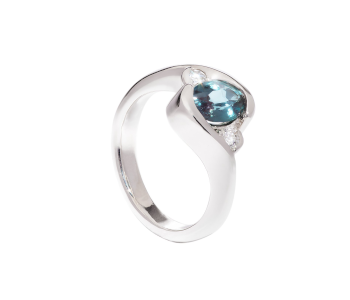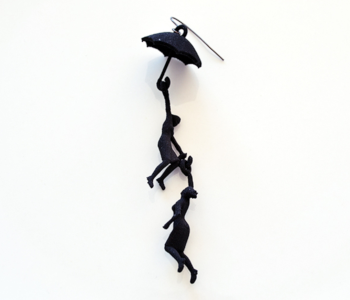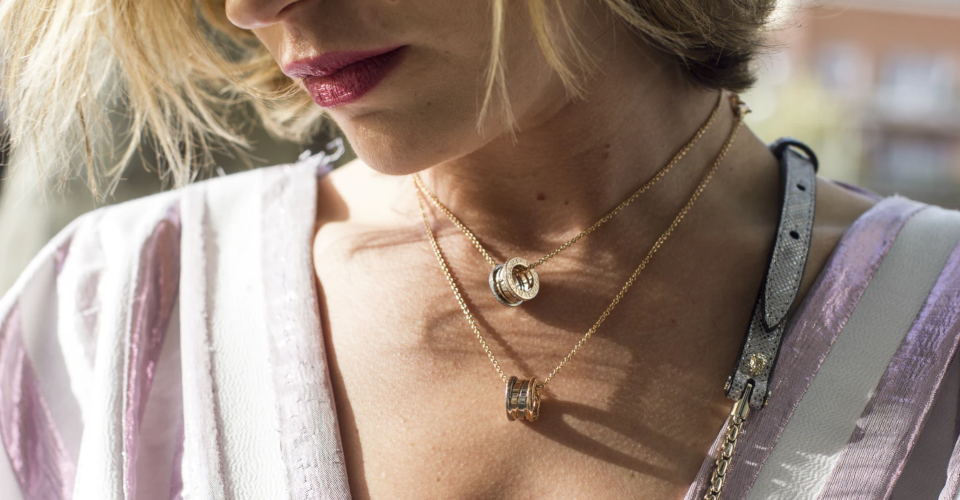3D Printed Jewelry – Tips, Examples, Pros and Cons
Jewelry-making is a craft that’s older than written history. Even since human civilizations were a thing, people have always found happiness in adorning themselves with precious materials designed according to what is considered the aesthetic at the time.
As technology has become more sophisticated, so has the craft of making jewelry. Although the usual metal-based techniques are still the most popular nowadays, more and more jewelers have started to recognize how to use 3D printing in this field. How exactly is 3D printing being used for jewelry and will eventually overtake the more traditional methods?
A disruptive force in the jewelry industry
For centuries, the art of making jewelry has always involved a lot of work done by hand. Although some machines have helped make the process easier, a lot of the details in jewelry need to be done by hand to be deemed acceptable by today’s standards.
Although there is great respect for the artisanal craft of jewelry making, the fact that it requires a lot of skill and time has also made jewelry increasingly expensive. Even then, there is a limit on just how detail a human hand, no matter how skilled, can create.
This does not even consider the design phase of jewelry making. Most clients would prefer some degree of customization or personalization of their jewelry. After all, nobody wants to own a piece of jewelry that has about a hundred other exact copies. This design process further stretches the time it takes to make just a single piece of jewelry.
Integrating 3D printing into jewelry making process addresses many of these problems. Designing for 3D printing is typically done through a CAD platform. This facilitates collaboration between the jewelry maker and the client, allowing for subtle revisions to be made in just a matter of minutes. Being able to see the model in 3D space also makes it easier to see flaws early on in the design phase.
From the 3D model, a quick prototype can be easily manufactured and at very little cost. This eliminates the need for clients to place “blind faith” in the skills of the jewelry maker. If the prototype is given the go-ahead by the client, the steps to make the actual piece can then start.
By using 3D printing, the jewelry making process benefits from reduced costs, reduced turnaround time, and less uncertainty. The advantages are even more apparent for mass-produced jewelry pieces, as several of them can be done using a single customized 3D printed mold.
How it works
There are two methods in which 3D printing can be used to create jewelry – one method is direct, while the other is indirect.
Direct method
The direct method is more straightforward but will also require more advanced 3D printing technology. Standard FDM or SLA will not do here – after all, there isn’t a large market for plastic rings or earrings. Instead, you will need powder bed fusion technology such as direct metal laser sintering (DMLS) or selective laser melting (SLM).
As the name implies, the jewelry will be created directly via the 3D printer. Both DMLS and SLM use metal powder as raw material, which is selectively sintered or bonded together via heat. This is a very quick and accurate process that can churn out detailed jewelry pieces very quickly. A wide range of metals can be used in DMLS or SLM including copper, silver, gold, and titanium.
The major disadvantage of this method is that the technology remains too expensive and inaccessible for small-time jewelry makers. If you want your own piece of jewelry made via DMLS or SLM, there are several companies offering it as a third-party service.
Indirect method

In the indirect method, 3D printing is used only to create the prototype of the eventual final product. Thus, there is no limitation on what kind of material or 3D printing technology can be used. This makes the indirect method a more accessible technique for those who own inexpensive FDM or SLA printers.
Once the prototype has been approved by the client, a cast will have to be made out of it. This is a process called investment casting. The cast can be made from common refractory materials including silica, gypsum, alumina, or zircon.
The investment casting process starts by dipping the prototype into the refractory material, allowing it to get into small gaps and fine details in the prototype. The cast is then bulked up, typically by adding layers of the refractory material by hand. A minimum thickness of millimeters is usually the target for investment casting. The cast is then hardened by exposure to high temperatures and left to dry for up to 8 hours.
When the cast is hard, the plastic material is evacuated by melting or burning away. This leaves an empty interior space where the liquid metal can be poured in. Once the metal has solidified, the cast is removed and the final metal piece undergoes post-processing.
As you can tell, the available technology is a huge determining factor in how one can use 3D printing technology to augment an existing jewelry making process. The indirect method is a bit closer to how jewelry is made traditionally using only simple 3D printing technology. The direct method is a complete departure from the traditional ways and features some of the most advanced 3D printing technologies available today.
Pros and cons of 3D printing in jewelry
It’s apparent that there are advantages to the 3D printing approach of making jewelry – you only need to look at how common the service has become nowadays to know this. However, it’s still a substantially different approach to the craft and will be subject to some growing pains. What are the merits of using 3D printing for jewelry and what are the pitfalls to watch out for?
PROS
Design freedom
3D printers are capable of designs, details, and geometries that could be far too complex for any pair of human hands to pull off. This is possible nowadays with modern 3D printers with resolutions at the micrometer level. With 3D printing, we are now seeing very innovative jewelry designs that would not have been possible with traditional artisanal techniques.
Better collaboration
The use of a digital platform for design and review opens a whole new dimension of collaboration between client and craftsman. No longer does a design need to be restricted to the imagination of the person making the jewelry. Through the use of 3D modeling software, both the jewelry maker and the client can share the same vision and make changes quickly, if necessary.
Even just being able to make a prototype using 3D printing is already a major improvement to the traditional process. In the old days, there was no way to preview a piece of jewelry until it had already been made. With a prototype, there is now a mid-point in the process where last-minute changes can be made before there are significant costs involved.
Shorter turnaround time
Whether through the direct or indirect method, using 3D printing to augment jewelry making should mean getting the products out faster. This is considering how most traditional methods are almost entirely done by hand.
This is especially apparent if you need to make multiple copies of the same model. With 3D printing, making a mold for multiple copies is as easy as replicating the model in the 3D modeling software. Not only is this faster, but it also promises repeatability at a level that cannot be achieved by human hands.
CONS
Requires added equipment costs
If you don’t currently own a 3D printer, then going this route will certainly mean investing in some new hardware and supplies. Even if you a simple FDM printer, there is a significant learning curve before you can consider yourself good enough to use it for jewelry making.
Just a warning for anyone new to 3D printing – you will make a lot of costly and frustrating mistakes. Trial and error is a natural part of 3D printing. Our advice is to stick to inexpensive filaments or resins for your first few trials until you develop a more reliable technique.
Requires 3D modeling skills
If you’re making your own jewelry, then you can’t rely on 3D models that are just available online. For more design freedom, you will have to learn to make the 3D models yourself. The bad news is that this is a completely different skill from 3D printing and one you’ll have to spend significant time learning.
As complex as it can be, the efforts to learn 3D modeling will certainly pay off. Being able to use 3D modeling software is central to the whole jewelry making process and will make you more legitimate to clients.
Tips on using 3D printing for jewelry making
Use special CAD software

As a testament to the popularity of using 3D printing for jewelry making, there are now CAD platforms designed specifically for modeling jewelry. A few good examples are MatrixGold and 3Design. These platforms “cut out the fat” from standards CAD software so you are left only with the functions necessary for jewelry design. This makes them a bit more streamlined and easier to learn, but don’t expect to design houses or landscapes with them.
Consider a professional 3D printing service
When you’re starting out with a 3D printing business, it can be tough to tell if your initial products are on par with other jewelry makers. A good way to set a benchmark is to send your 3D models to a company that has experience in offering this kind of professional service. By comparing your output with theirs, you can easily see gaps that need to be filled in and other opportunities for improvement.
Take advantage of your printer’s maximum build size
3D printing is faster than doing things by hand but printing a detailed model can still take a few hours. To make your time worth it, it’s often a good idea to print multiple models on a single run. This is a good idea if you’re working on several projects simultaneously or if you want to several options for a single client.
No matter how you use 3D printing, don’t forget that it is only one step in the whole jewelry making process. You might still need to master the investment casting process or the post-sintering step needed to make metal 3D printed jewelry stronger.
Some examples of 3D printed jewelry
To wrap up this article, let’s look at some nice examples of jewelry that have been designed and made with the help of 3D printing. We’ll be focusing on the more complex and “out there” pieces that would have been a nightmare to create by hand.
1. Silver Orchid Necklace

This piece by Nervous System, a NY-based design firm, highlights how 3D printing can be used to create very complex geometries filled with lots of negative space. Its symmetry is belied by the various folds and ruffles, giving it an aesthetics that feels very organic. This is likely because it was supposedly based on a computer simulation of differential growth.
The Silver Orchid Necklace is an amazing statement piece that really shows off the level of detail that 3D printers can produce. While it’s impressive up close, it’s even more amazing to know that it measures only around 2 inches across.
2. Custom Engagement Ring

While the engagement ring that is the topic of the article is not commercially available, the whole story of how it was created is a textbook example of the 3D printed jewelry making process.
With the stone already chosen, the client only had to come up with different models of engagement rings that will fit the stone. The different prototypes were 3D printed with plastic, making it much easier to make the choice of which one of them looked best. From there it was just a matter of making an investment cast from the prototype and making the ring out of whichever metal was preferred.
The process wasn’t anything too technical, but this account exhibits how valuable 3D printing can be in this industry. A 3D printed engagement ring is decidedly unique, especially if the model was made from scratch.
3. Umbrella Girls Earring Set

This is a piece of 3D printed jewelry that is more fun than fancy. It features a couple of girls hanging onto each other, with one holding up an umbrella. This showcases just how creative you can be with your jewelry designs if you have the power of 3D modeling and printing in your hands.
The product being sold by Shapeways is made of plastic, but there’s no reason that you cannot take the same concept and take it further. All it takes is making an investment cast out of a plastic prototype.
Final thoughts
It’s no secret to anyone that design freedom is one of the most fundamental strengths of 3D printing. When this capability is applied to a traditional craft, such as jewelry making, it can unleash a lot of creative potential.
For traditional jewelry makers, the idea of using 3D modeling software to come up with extremely detailed designs is simply too good to pass up. Perhaps this is the sign you’ve been waiting for to finally get into 3D printing and modeling.


